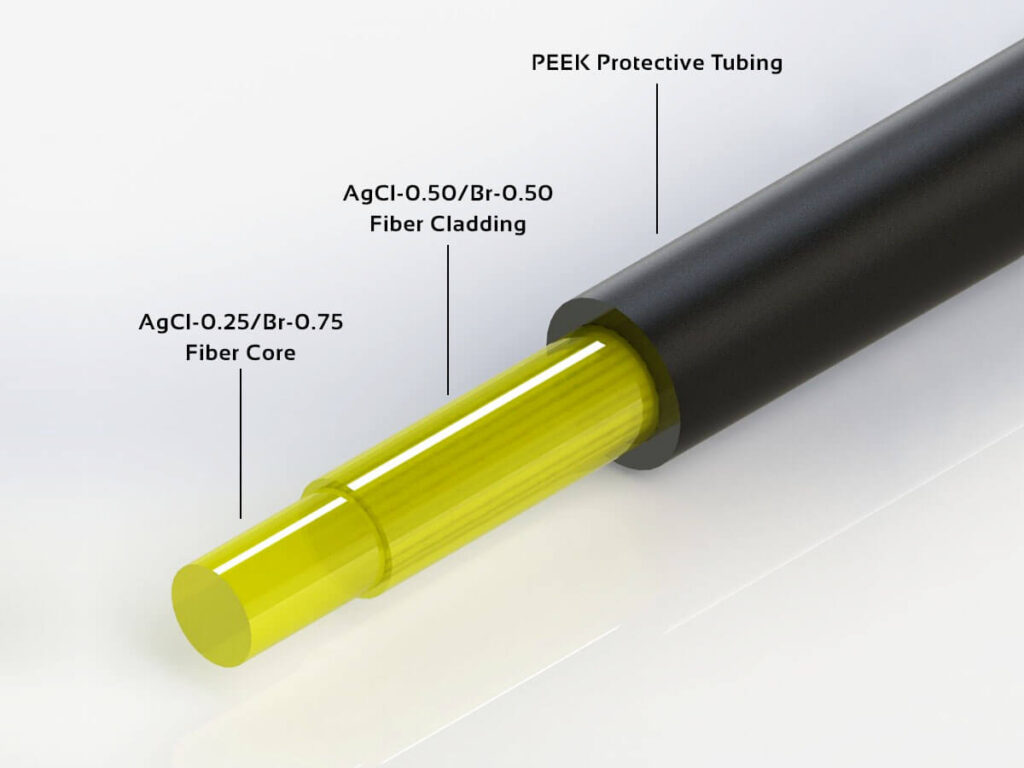Contents

Source: FindLight
Exploring Mid-Infrared Optical Fibers
Optical fibers are a cornerstone of modern communication and sensing technologies. While silica-based fibers dominate the market, their limitations in transmitting mid-infrared light have led to the development of alternative materials. This article delves into the fascinating world of mid-infrared optical fibers, exploring their types, properties, and applications.
Limitations of Silica Fibers
Silica fibers are the most common optical fibers, but they have a fundamental limitation: they cannot transmit mid-infrared light effectively. This is due to the strong absorption of optical wavelengths above approximately 2 μm, attributed to vibrational resonances. Consequently, alternative materials are necessary for mid-infrared applications.
Alternative Materials for Mid-Infrared Fibers
Chalcogenide Glasses
Chalcogenide glasses, composed of sulfides, selenides, or tellurides, offer a solution for mid-infrared transmission. These materials have lower vibration frequencies than silica due to the higher mass of chalcogenide ions. As a result, they exhibit infrared absorption at longer wavelengths, making them suitable for wavelengths from 1 to 9 μm.
Germanate Glasses
Germanate glasses are chemically similar to silica but contain germanium instead of silicon. These glasses extend the transmission range to roughly 3 to 4 μm, with transmission losses around 0.2 dB/m. They can transmit laser beams with optical power exceeding 10 W through multimode fibers.
Heavy Metal Fluoride Glasses
Heavy metal fluoride glasses, such as ZBLAN, are another option for mid-infrared fibers. Although they have a loss minimum around 2.5 μm, their fragility and susceptibility to moisture pose challenges. Variants with improved durability exist, though often at the cost of higher propagation losses.
Polycrystalline Fibers
Polycrystalline fibers, made from halide materials, exhibit excellent infrared transmission. Silver halide fibers, in particular, allow transmission from 3 to 18 μm, with low propagation losses in the optimal wavelength region. However, they are susceptible to increased losses over time due to microcrystal growth and photodarkening.
Sapphire Fibers
Sapphire fibers, composed of monocrystalline aluminum oxide, offer robust transmission up to 3.2 μm. Their low propagation losses and high optical power capability make them suitable for applications requiring high-power light transmission.
Hollow Waveguides
Hollow waveguides represent a unique approach, where most optical power propagates within an air core. This design reduces propagation losses and allows for a wide transmission wavelength range. Hollow waveguides can be optimized with additional layers for improved performance.
Photonic Crystal Fibers
Photonic crystal fibers, typically made of silica, are being explored with chalcogenide glasses for mid-infrared transmission. These fibers leverage high nonlinear indices and optimized dispersion through photonic crystal structures.
Challenges and Properties of Mid-Infrared Fibers
Mid-infrared fibers face challenges such as fragility, high propagation losses, and limited mechanical robustness compared to silica fibers. Their optical damage threshold is lower, and they are more expensive due to less developed fabrication technologies. Despite these challenges, they offer valuable solutions for specific applications.
Applications of Mid-Infrared Fibers
Mid-infrared fibers find applications in various fields:
- Military Countermeasures: High-power mid-infrared light is used for distracting heat-seeking rockets, with fibers transporting light from the source to the collimation system.
- Spectroscopy and Imaging: Infrared light is transported to spectrometers or imaging devices, enabling chemical species identification through characteristic absorption lines.
- Evanescent Wave Sensors: Chalcogenide fibers are used in sensors, benefiting from their high refractive index.
- Thermal Imaging: Fiber bundles transmit light from source areas to detectors, facilitating thermal imaging applications.
Conclusion
Mid-infrared optical fibers play a crucial role in extending the capabilities of optical technologies. By utilizing diverse materials like chalcogenide glasses, germanate glasses, and polycrystalline fibers, these fibers overcome the limitations of silica and open new possibilities in communication, sensing, and defense applications.
Source: art photonics
Feel free to comment your thoughts.



